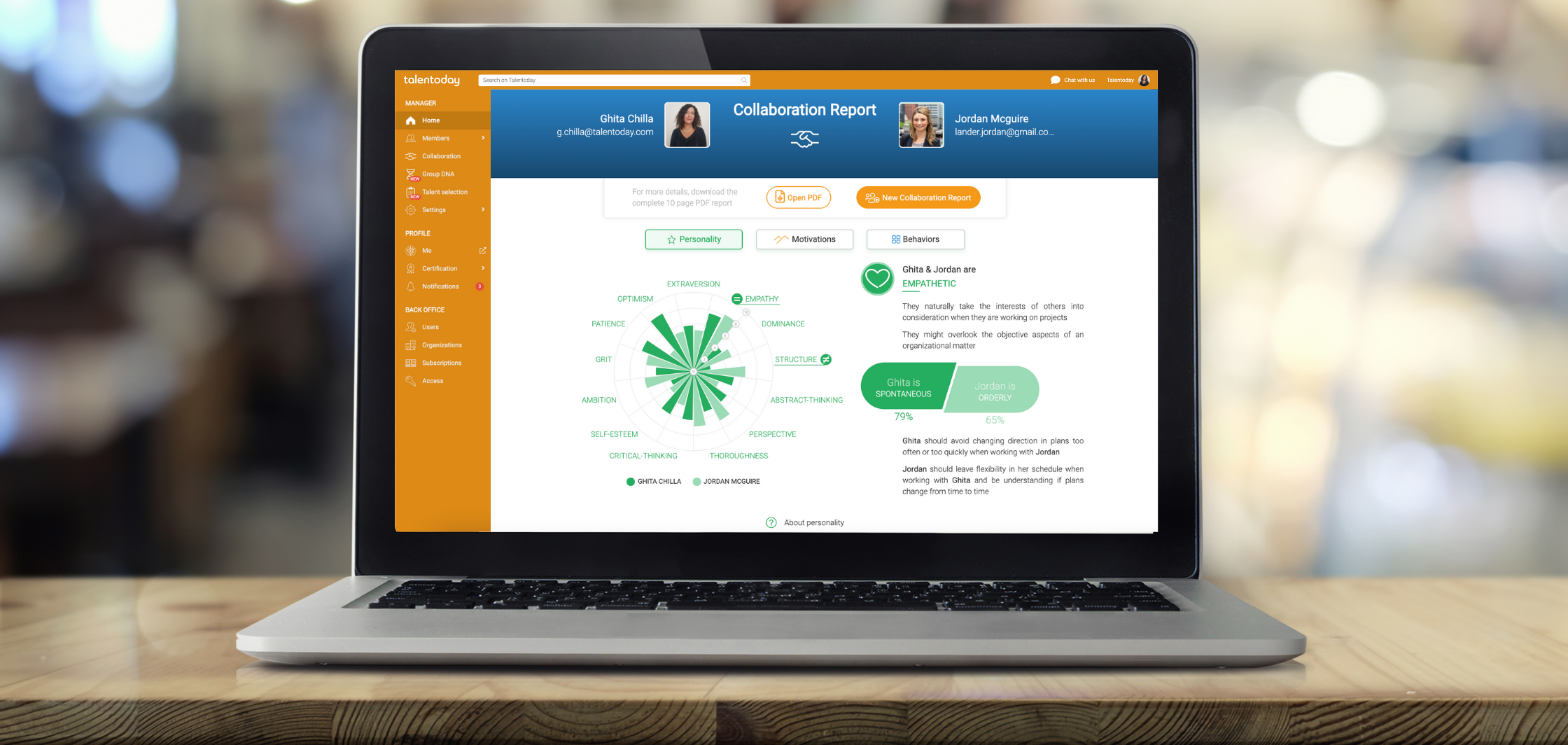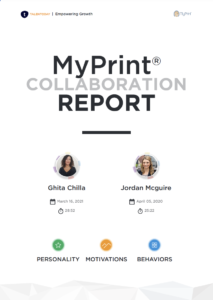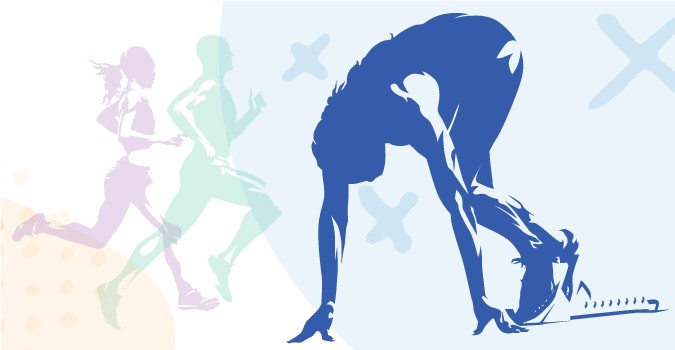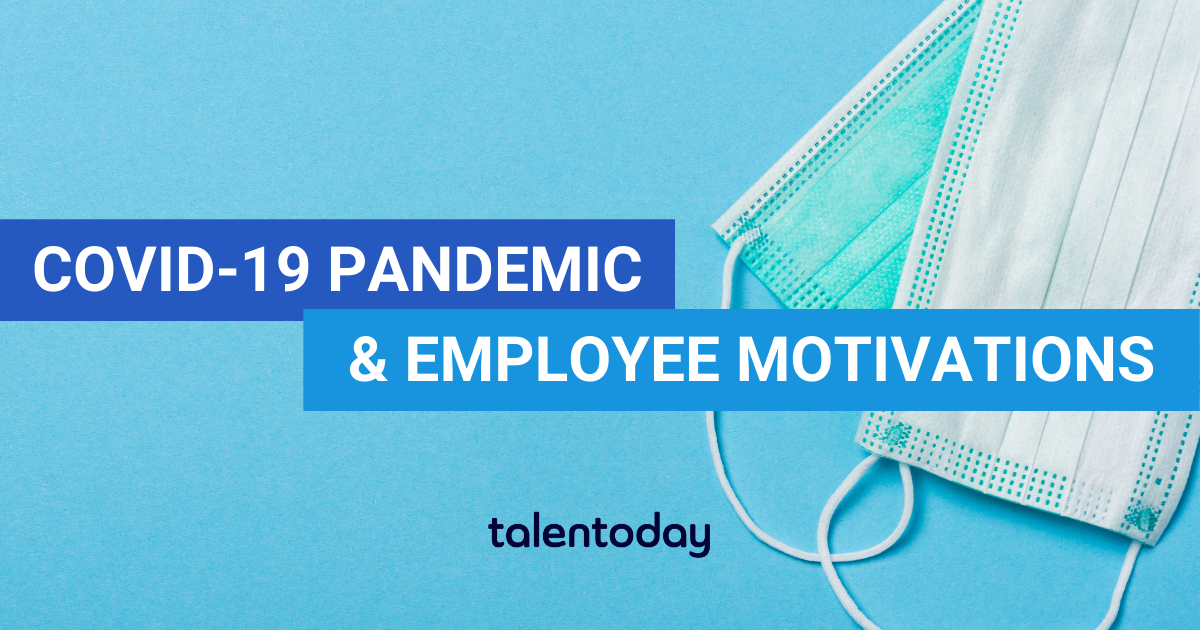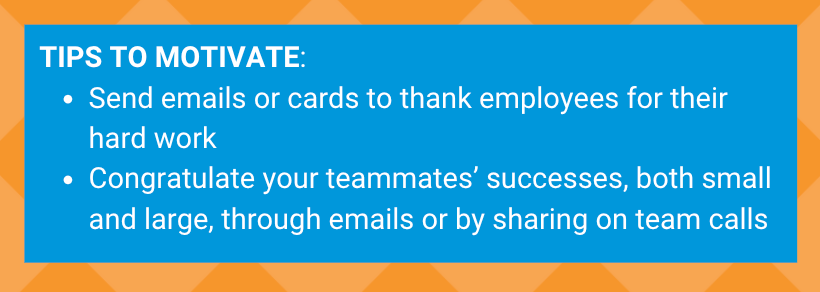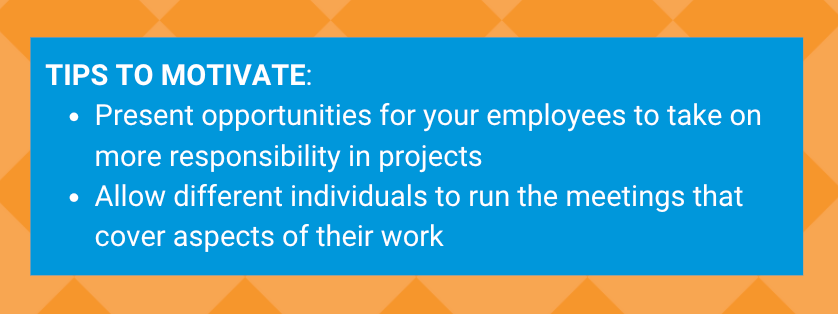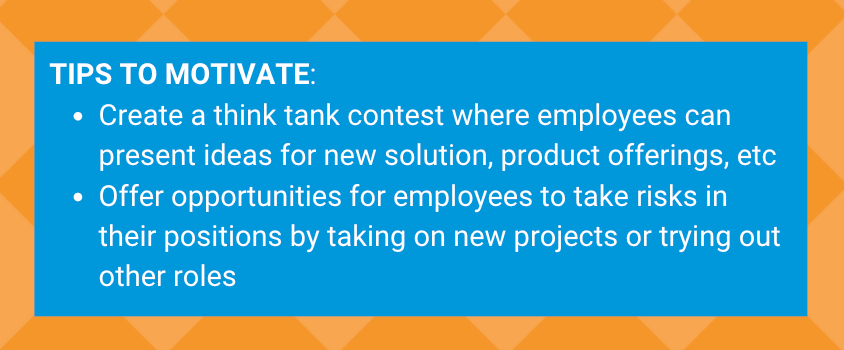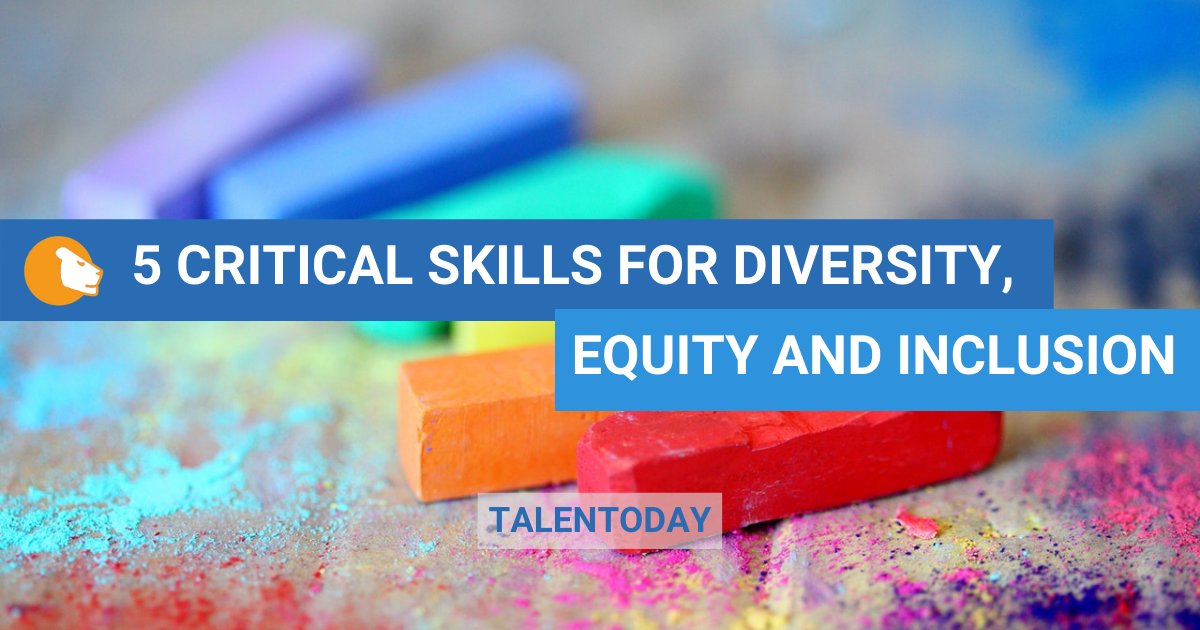Medix Case Study: 68.9% Decrease in New Hire Turnover
Medix implemented the use of MyPrint into our onboarding programs and we’ve seen a positive impact on how we get to know our newest teammates. From personality styles to motivators, the MyPrint Collaboration Report has helped our new hires cultivate strong team relationships, leading to higher levels of engagement, retention and success in their new roles.
– Megan Steiger, VP of Human Resources.
.
THE CHALLENGE: NEW HIRE TURNOVER
With a higher than desired turnover rate for new employees in the first 90 days, Medix turned to Talentoday to determine how to better use soft skills data to reduce turnover rates.
THE SOLUTION: INNOVATION WITH COLLABORATION
With HR working as a strategic business partner, Medix was able to empower managers and their direct reports to have enhanced collaboration with soft-skills data. Medix’s HR team implemented proactive collaboration sessions between managers and new hires based on Talentoday’s Collaboration Report, a 1:1 report designed to compare two individuals’ similarities and differences. The report provides guidance on how they can work better together better based on their unique MyPrint results. By implementing these sessions as proactive and voluntary, the buy-in is high among internal employees.
With HR acting as the facilitator, the manager and new hire are able to use the report to talk through examples that can help motivate them, and what discourages them, empowering engagement to work together towards business goals.
THE RESULT: A 68.9% DECREASE IN NEW HIRE TURNOVER
As a result, Medix saw a significant increase in employees staying with the organization past the first 90 days of employment. In fact, the organization experienced a 68.9 percent decrease in new hire turnover!
.
ABOUT THE CLIENT
Medix, a US-based staffing organization, has been pioneering staffing and digital services over the past twenty years. Being a purpose-led organization, Medix is guided by their core purpose to positively impact lives. In putting people at the heart of what they do, they take an innovative position as both an employer and staffing provider of choice by leveraging soft-skills insights as part of their holistic employee, talent, and client experience.
Since 2018, Medix has been leveraging Talentoday’s soft-skills assessment, MyPrint, and its personality, motivation and behavioral insights as part of their service offering to both talent and clients. Additionally, Medix designated an internal HR representative to champion MyPrint initiatives and infuse people analytics even further into Medix’s employee culture.
Ready to start your transformative Talentoday success story?
Race to Reshape Your Dream Team
As organizations anticipate post-pandemic life, business leaders are assessing their talent management challenges, looking to (re-)build a dream team and optimize performance. Companies are competing to hire top talent.
The workplace terrain has changed, and employers need to navigate the new normal of virtual work. Do you have who and what you need for your organization to be successful?
Talentoday offers insight into what to consider when building and shaping your team
- Use our checklist to shape your dream team.
- Get our coach’s guide on characteristics and traits to look for when hiring new employees in a remote work environment.
- Gain insight into how soft skills can help in hiring and motivating your team.
- Learn what traits support innovation, strategic thinking and problem solving.
- Find tips on cultivating an inclusive culture.
Click here to download our new infographic today!
Tell a Soft Skills Career Story in Your Next Job Interview
What makes for a great job interview? You know, one of those interviews that makes you say, “I totally nailed it. I know I’ve got the job. It’s time for a happy dance!”
Well, for one, it’s not about reciting your resume word-for-word like some sort of business robot (even if “the robot” is a fantastic choice for a happy dance). Instead, it’s about going beyond the resume to bring the story of your career to life. Then, taking that story a step further to connect your future to the goals of the employer.
The best storytellers don’t just list off events in the order in which they occurred. Instead, they draw the audience in by sharing the unique qualities of each character. In that same way, it’s time to transform your next job interview into an engaging story of what makes you unique as a candidate! To get there, you’ll have to shift the focus from a rehashing of professional milestones to what truly sets you apart — your soft skills!
Chapter 1: Soft Skills vs. Hard Skills
First and foremost, let’s lay out the difference between hard skills and soft skills. Hard skills, also commonly referred to as technical skills, are straightforward requirements for a position that employers can easily check off of a list. Does this applicant have the necessary degree? Did they complete training in this particular area? How many years of experience do they have in the industry?
Hard skills may be a prerequisite for getting your foot in the door, but soft skills are the key to unlocking the full power of your career story. These are the skills that touch on the less tangible elements of the way we work together. Soft skills bring to mind things like communication, leadership and teamwork. In other words, the elements of a great story!
Chapter 2: Identifying Your Soft Skills
If job interviews are all about storytelling, then every job candidate needs to build a narrative with a compelling beginning, middle and end. To start telling your story, think back to previous experiences in your work, education and outside activity history. What made you successful during those experiences? When did you fall short and why? What are you hoping to improve upon as you turn the page to a new chapter in your career?
As a starting point, consider using your resume as a reference. Then, begin writing out these key career moments from memory with soft skills as your focus, going beyond the bullet points to fill in the rich details. Unfortunately, our memories can only tell ourselves and our audiences so much about the way we interact with others in professional settings. In order to go deeper when identifying your soft skills, consider taking an assessment backed by science — like MyPrint®! Supporting anecdotal evidence from your career and experiences with tools built on data-driven people analytics can add credibility to your claims.
Chapter 3: Putting Soft Skills in Action During Questioning
Once you start seeing the job interview process through the lense soft skills, you’ll notice how many of the most common and difficult questions can be easily answered with soft skills in mind.
Here are five of the most common job interview questions, as well as the areas of soft skills employers are look for in your response:
- Can you tell me about a time when you overcame a significant challenge at work?
- What happens when you have multiple deadlines and how do you prioritize?
- Give me an example of when you had to work closely with someone who was difficult to get along with. How did you handle interacting with that person?
- Can you tell me about a time when you had to ask for help?
- What is your preferred management style?
When you answer questions like these, answer with your soft skills! If you are unsure what your strengths are, look at your MyPrint One Pager. What are your top three personality strengths? For example, if you are Empathetic, you might excel working with difficult people because you can put yourself in their shoes and understand why they behave in certain ways. If you are Easy-Going and know that details aren’t your forte, you might be more inclined to reach out to a detail-oriented colleague when you have projects that require precision. The more concrete the example you can share, the better!
Writing an Ending with Confidence
It’s a tale as old as time — the job candidate makes it to the end of the job interview journey only to feel like they missed out on a golden opportunity. One way to avoid this tragic fate is to turn your job interview into a story about soft skills! Prepare for your next meeting with a potential employer by thinking about your career as chapters, each highlighted by the traits that make you unique.
Are you looking to turn your next job interview into the story of your soft skills? Click here to take MyPrint and receive a detailed assessment of your unique personality, motivational and behavioral traits!
New Tailored Group DNA Feature Adds Personalization to Soft Skills Analysis
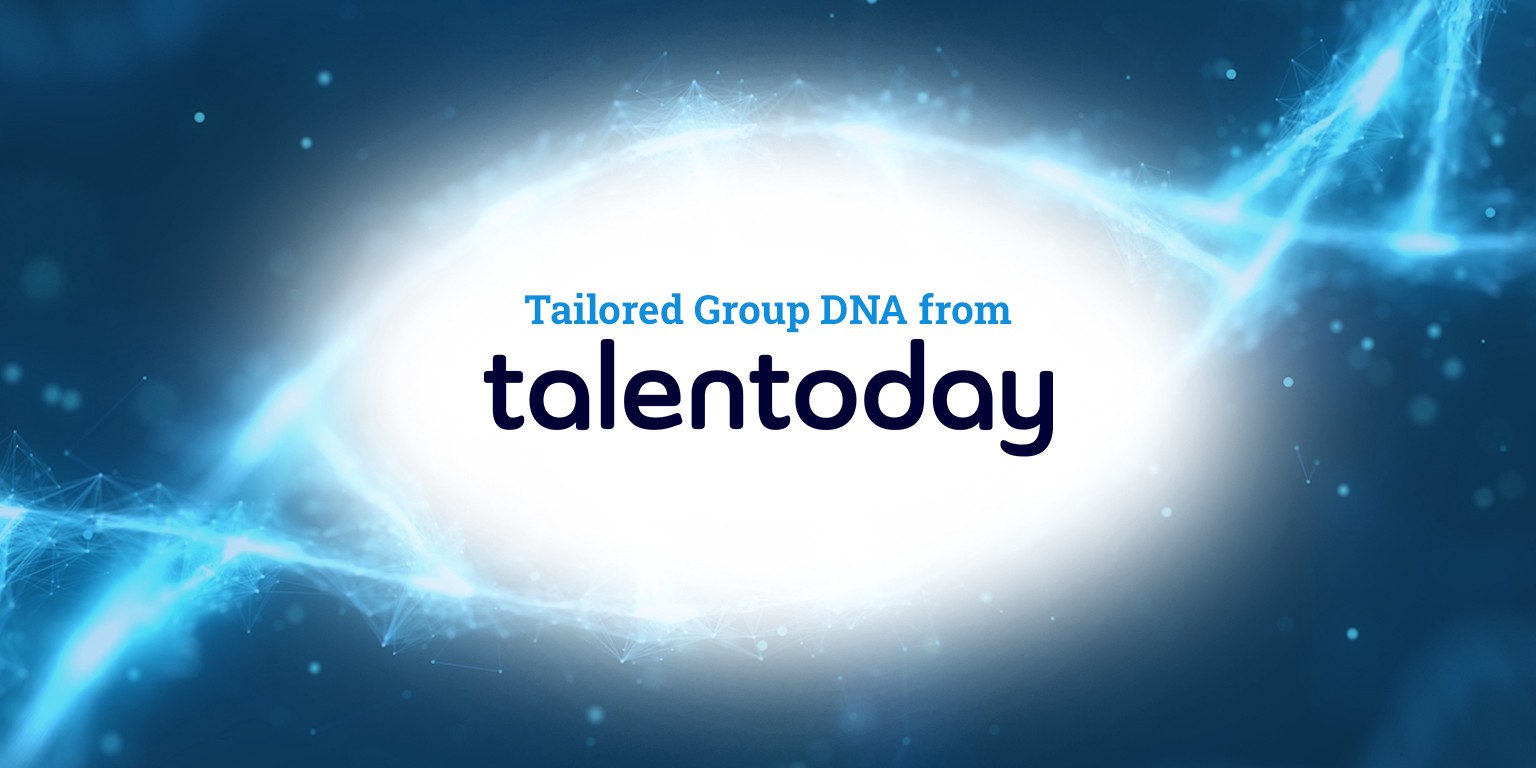
Talentoday is excited to announce the arrival of the newest feature of Talentoday Manager — Tailored Group DNA! In the last year, our team introduced Talentoday Managers to Group DNA. The idea was simple: Users needed to be able to make smarter HR decisions and maximize synergies within teams by leveraging MyPrint® soft skills data at scale.
Group DNA achieved this with two core purposes in mind: team profiling and talent matching.
- Team Profiling: Group DNA allows users to uncover the soft skills and traits that shape any distinct work group of three or more people. The result is a visual representation of what makes a group effective, and where there are skills gaps to fill.
- Talent Matching: Group DNA improves talent matching by determining the synergies within a job function by taking a sampling of members and allowing Managers to identify the predominant skills that contribute to that groups’ success. Based on that knowledge, candidates can be matched to the role against the Group DNA.
Tailored Group DNA takes this concept one step further by adding personalization options for our users. While Group DNA is a purely data-driven tool which compiles all dominant traits from a sample group of members’ MyPrint data, Tailored Group DNA allows managers to zero-in on the precise traits they may need to focus on for a particular hiring or management situation.
With Tailored Group DNA, you can now find solutions to the following questions:
- How do I leverage Talentoday’s matching algorithm without an ideal sample group to work off of?
- How can I integrate the soft skills that reflect my organization’s values into our selection process?
- How do I leverage my team’s MyPrint insights to create diversity of thought?
It’s time to put a human touch on the data that’s driving your business forward! From hiring to internal mobility, Tailored Group DNA will empower you to fill the soft-skills gaps on your team and put your expertise to good use while maintaining leveraging the scientific integrity of our Group DNA’s matching algorithm.
Interested in seeing Tailored Group DNA in action? Contact our team today to learn more about how our latest feature is changing the way teams visualize and act upon soft skills data!
The Soft Skills Resume is Here to Transform Your Boring Job Search
Resumes are boring! There, I said it. Job seekers know it. Hiring managers know it. Heck, the entire working world knows it! Why, then, are we all creating the same, cookie-cutter resumes over and over again expecting different results?
Thankfully, it doesn’t have to be this way anymore. Toss out that boring, black-and-white career document and say hello to the soft skills resume!
Why Soft Skills?
First things first, let’s sort out why soft skills are so important in today’s hiring landscape. Years ago, the conventional wisdom was that finding a job was a straight-forward process. Either you had the skills to do the job or you didn’t, simple as that! This way of thinking only accounted for technical skills, also known as hard skills. Think of hard skills as the nuts and bolts of how to do the functions of a job that a person could learn through formal education. For example, before a doctor practices medicine, they should definitely go to medical school first.
Soft skills, on the other hand, relate to the unique ways we connect to one another while we work. Examples include communication, leadership and teamwork. While hard skills like education and previous work experience might help you book a job interview, it’s actually soft skills that will ultimately help you land the job.
Unfortunately, identifying soft skills remains a challenge for everyone involved in the job search. In fact, a recent survey from LinkedIn found that while nearly 75% of job seekers polled feel it’s important to highlight their soft skills, the same percentage of hiring managers believe a standard resume is insufficient in evaluating a candidate’s soft skills. Clearly, both sides of the interview table need to find a new way to communicate with each other.
Identifying Your Soft Skills
Soft skill-focused resume writing requires self reflection. To get started, think back to previous work or education experiences and consider the things that made you successful in what you did. Was it your ability to communicate with your peers that set you apart? Did you rely on a knack for scheduling and organizing your day? Maybe you’re a pro at paying attention to all of the details or you found a way to adapt and be flexible when situations changed. The moments of preparation and execution that stand out in these memories are probably going to be your soft skill strengths!
However, the pictures in our minds can only tell a small portion of the soft skills story. To go deeper when identifying what makes you unique, consider taking an assessment backed by science — like MyPrint®! Supporting anecdotal evidence from your career and experiences with tools built on people analytics and strong data can add weight and credibility to your claims.
Creating Your Soft Skills Resume
Once your soft skills are identified, it’s time to transform your resume by making them the stars of the show. This can be accomplished with two key changes to the typical resume format: creating a separate “Skills” section and sprinkling soft skills throughout the rest of your resume.
- Skills Section: At this point in your jobs search, you’ve most likely come across templates for standard resumes that include flashy sections for education and work experience. It’s time to set aside an equal amount of space for a section dedicated to your skills — both hard and soft. To build out this section, start with an exhaustive list of all of your skills. Then, add or remove the skills that best apply to the particular job opportunity.
- Sprinkle Skills Throughout: While facts and figures will provide powerful takeaways in the work experience and education sections of your resume, soft skills can add depth to these areas as well! For example, instead of leaving a bullet point of information feeling cold without context, like, “Compiled spreadsheets for 6 accounts” add a bit of soft skill spice by rephrasing the same bullet point this way, “Applied detailed-orientated thinking during data entry across 6 key accounts.”
Let’s face it, the old days of boring resumes are rapidly falling to the wayside. Today, job seekers and employers alike are putting a premium on tapping into what makes a workplace unique. The best way to highlight your true self in the limited space of a resume is to transform it into a document that puts soft skills front and center!
Do you need more help turning your resume into a showcase of your soft skills? Check out our recent blog post on steps for infusing your MyPrint results directly into your resume!
How to Conduct a Soft Skills Interview in 4 Easy Steps
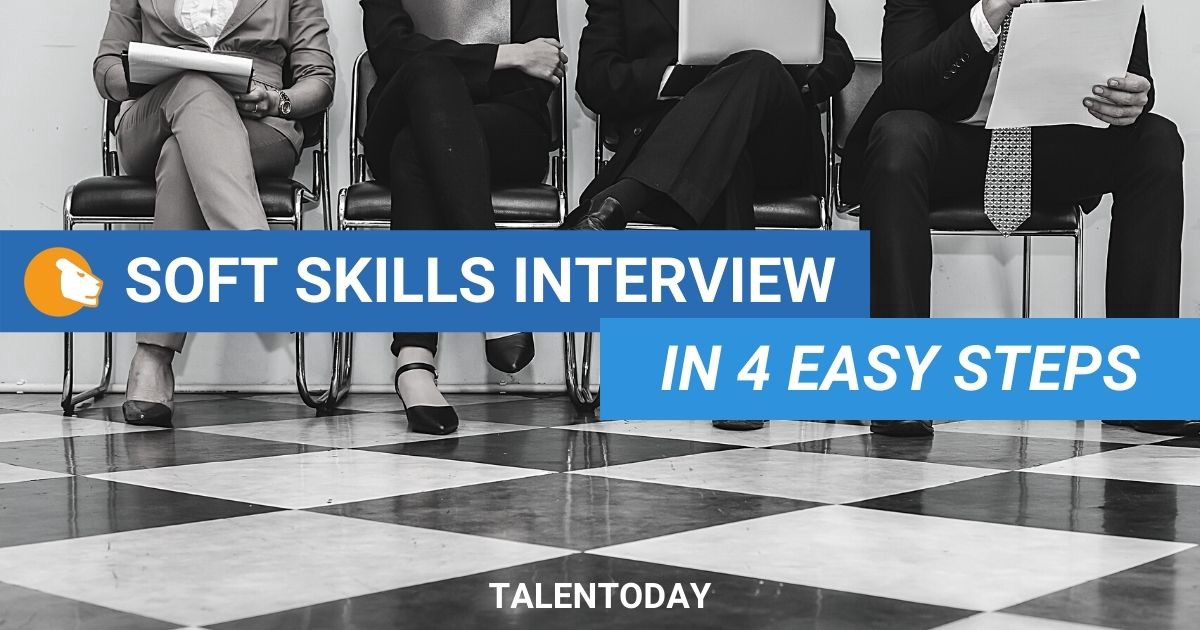
If you have been following our blog then you know how important we think soft skills are to incorporate into your daily work lives.
“Hard skills will get you the job, but soft skills will make you successful.” -Me, at least 3 times per week
However, sometimes this can seem overwhelming. Where should you, as a manager, start? In this blog article we will take a step-by-step look at how to use soft skills from the very beginning of the employee lifecycle: the interview process.
Step 1: The Job Requirements
At first glance, you might think you know what goes into a position. Maybe you have been hiring for this position for quite some time, or you have worked with individuals in this role before. Although you might think you know all of the important requirements for a role, it is still important to take the proper steps to evaluate a job description in order to make a more informed decision on what the role entails.
Once you have determined what hard skills and qualifications are necessary for a position, it is time to determine what soft skills will help someone be successful in this role. There are many ways to find this information. Here are a few of the common ones:
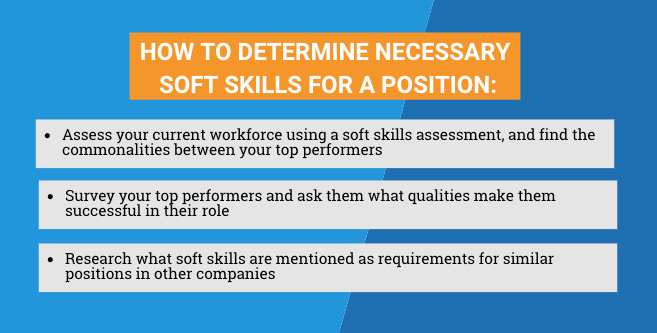
It is very important that you are using a scientifically reliable and valid method to assess your teams’ soft skills. For the purpose of this article, we recommend using the MyPrint® assessment to assess your current workforce and using some of our tools available through Talentoday Manager to determine what to look for during the interview process.
An important note here: although you are looking for commonalities among your top performers, that does not mean that you want a cookie cutter of those individuals. One of the most important things for a team’s success is having diversity among group members to help fill in skills gaps and increase creativity and innovation¹.
Step 2: Preparation
Now that you have determined what the important soft skills are for the position, you need to prepare for the interview. Having a set interview process helps to ensure that you are making more informed decisions for your company and not using personal judgments or unconscious biases when hiring. Topgrading² is one example of an interview methodology that is intended to help identify top talent, and incorporating soft skills into this methodology is seamless.
Prior to the interview starting, you will also want your candidates to complete a MyPrint® assessment (check that their results are from the past 6 months to ensure accuracy). Make sure that the hiring manager and anyone involved in the interview process have taken the time to review the candidate’s MyPrint® One Pager (soft skills summary) and are familiar with the soft skills that have been determined important for the role.
To prepare for the soft skills portion of the interview, we recommend that you have the Premium Report version of the candidate’s results handy and review their top 3 personality strengths, motivators, and behaviors (as shown on the One Pager report). Then ask yourself the following questions:
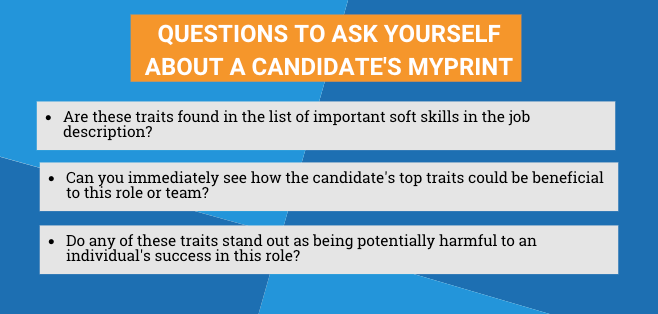
Lastly, take a look at the candidate’s behaviors. The MyPrint® Premium Report has two interview questions tailored to each behavioral style to help gain a better understanding of how that individual showcases those styles. Make a note of any behaviors that you would like to dig deeper on, and have those interview questions ready to go!
Step 3: Conducting the Interview
When conducting a soft skills interview, it is important to stay open minded. If someone’s top three MyPrint® traits aren’t the exact three that you are looking for that does not mean they are not going to be a good candidate. Instead, look at their Premium Report to see where they fall on the scale for each of those traits. Take the time to ask questions around those topics, and make sure that you are being clear about the role expectations and see if that matches what they are looking for.
Step 4: Scoring the Interview
Once the interview is completed and the candidate has left, it is not time to make a decision quite yet! Take the time to review your interview notes and apply some quantitative metrics to what you were looking at.
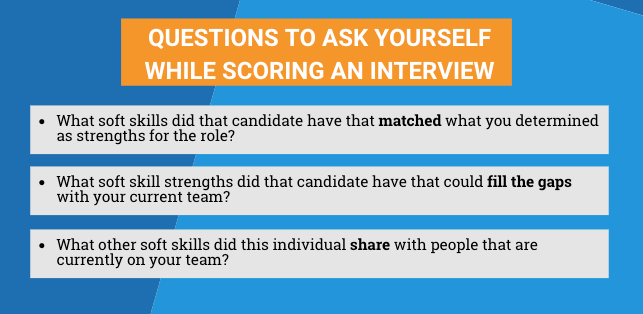
To ensure fairness between candidates, use a standardized method of scoring the interviews. Grading methods can include ranking responses or finding the difference between ideal scores and actual scores in their MyPrint® scales.
To Sum It All Up…
Using soft skills in the interview process can help you make more informed hiring decisions, and help you find candidates who will be more successful in their role. The interview process is an investment for everyone involved, so it is not something that should be done without careful evaluation and purpose.
Remember to be open-minded when it comes to soft skills; you won’t have all of the answers right away. As you gather more information over time you will learn more about what personality traits, motivations, and behavioral styles can be attributed to success in a role and sometimes, what you find might surprise you!
Want more information about soft skill interviewing, or to receive a copy of our template? Email Talentoday at customer@talentoday.com to learn more about our assessment and services!
Sources
¹https://www.managers.org.uk/knowledge-and-insights/listicle/the-five-business-benefits-of-a-diverse-team/
²https://topgrading.com/
COVID-19 Impact on Motivations in the Workforce
It’s been one year since COVID-19 took the world by storm. Countries started to close their borders and government safety regulations were enforced. As a result of unpredictable lockdown and safety measures, each person’s environment has changed in some way. For millions of typical “office workers” this meant working from home, while those deemed essential continued to go into work with increased risk. With all of this change happening externally, there is internal change that comes with it. How has the move to a remote workspace, social distancing, new health measures, and other pandemic outcomes impacted the things that motivate your employees? Let’s learn more about how motivations work first.
One of the most widely accepted motivation theories is Maslow’s Hierarchy of Needs. You may recognize the motivation pyramid that has found its way into most every psychology, marketing, and ethics textbook, and it is the foundation for the Talentoday MyPrint motivation dimensions as well! There are five stages of motivation included in the pyramid: physiological needs, safety needs, love and belongingness needs, esteem needs, and self-actualization needs. The basis of Maslow’s theory is that everyone starts at the bottom stage of the pyramid with their most basic physiological needs: food, water, clothing, and shelter. Once those needs are met, we are able to work our way up to safety, and so on.
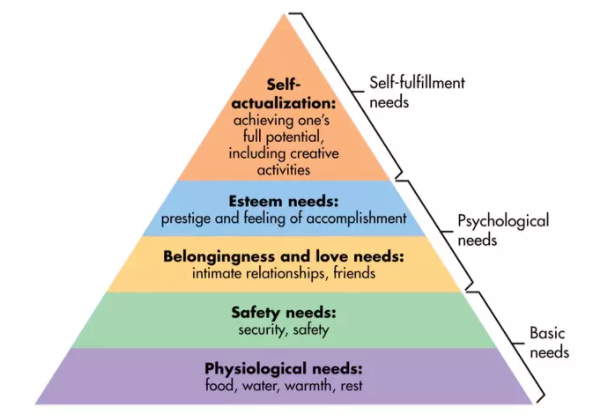
Our environment plays a huge role in our motivations and where we’re at on the pyramid. For example, during the COVID-19 pandemic, we have seen a lot of people focus on addressing their basic safety needs, like employment and financial stability. Other factors that can impact our motivations include, but are not limited to, changes to our work environment, major family events such as births or deaths, changes in our relationship status, living situations, or unforeseen financial events.
Motivations and MyPrint®
Since we know that motivations are so dependent on our environment, we decided to take a look at how the COVID-19 pandemic has impacted the motivations found in MyPrint®. To do this, we calculated the motivations that saw the biggest increase amongst assessment takers before and after March 2020. We observed three dimensions that had a larger increase than the others: Recognition, Responsibility, and Excitement.
Recognition: Need for External Recognition
People who have a need for external recognition are driven to work harder when they receive positive feedback and praise from coworkers. When working in an office environment, this will naturally happen more frequently; you tell an employee they did great on a presentation while passing their desk, or congratulate a coworker on hitting a milestone while you’re getting your morning coffee. However, in a remote environment, we need to be more intentional about giving that recognition. Since March 2020, a total of 81% of the global workforce has had their workplace fully or partly closed. Whether this impacts someone directly, or if they are seeing this happen with their friends and loved ones, receiving that external recognition can help to reassure individuals that they are doing a good job and motivate them to continue the good work.
Responsibility: Need for Taking Personal Responsibility
People who have a need for taking personal responsibility are comfortable being held accountable for others’ actions, regardless of error or failure, and are more comfortable being accountable for their own work as well. Moving into a remote work environment means that individuals need to take on more personal responsibilities than they did before: from managing all of their time to taking on pieces of projects that they might not have needed to before. For some people, having more control over their work environment can create that drive to keep them motivated at work.
Excitement: Need for Adventure
People with a need for adventure are driven by situations that offer thrill, seek to take risks and are very tolerant of unpredictable situations. A lot of people have experienced a more stagnant environment since March of 2020. Whether it is due to stay at home orders, travel restrictions, or lack of a commute, we are all going through it. Because of this, it is not surprising that people are craving more adventure in their lives. Work can be a great place to create excitement — from new opportunities to new roles or training, providing an environment where employees can take more risks and try new things can lead to a more engaged workforce.
Check In With Your Workforce
Your workforce is going to evolve over time, and it is important to keep up with those changes! Whether it’s a global pandemic to impact the shift in motivations, or if it’s typical life events taking place, you want to make sure that you are evolving alongside your employees. Changes to an employee’s motivations means adjusting your management style, and by keeping up with these changes, you can create the most engaging environment for your workforce as possible.
We recommend employees take the MyPrint assessment every 6–12 months. Interested in learning more about MyPrint and how our solutions can help you better understand your workforce? Contact Talentoday at customer@talentoday.com to learn more about our assessment and services!
Social Awareness in the Workplace: Do You Have These 5 Critical Skills for Fostering Diversity, Equity and Inclusion?
Following the mass protests and grassroots social movements that have come to define the summer of 2020, many businesses felt compelled to speak up and reevaluate their diversity, equity and inclusion (DEI) efforts. Not only was it the right thing to do, but recent research from Monster found that, “more than 86% of candidates say that diversity, equity and inclusion in the workplace are important to them and 62% of people would go as far as turning down a job offer if it came from a culture that didn’t support a diverse workforce.” It’s feedback like this from job seekers that earned DEI a spot on Medix’s list of the hiring trends that will define 2021.
Thanks to individual employees, many organizations have recognized the importance of these efforts in the last year; however, achieving the kind of progress being asked for across all industries is another story. According to the Society for Human Resource Management (SHRM), “Organizations cannot become multicultural by proclamation. It takes concerted effort.” In other words, while posts on social media talking about creating a diverse workforce may be a positive step forward, real change requires action at a personal level.
To get there, individuals within an organization need to develop the skills that allow for real growth within a company culture. SHRM identifies five traits leaders and employees alike must focus on when adopting a diverse mindset: Openness, Flexibility, Social Dexterity, Emotional Awareness and Curiosity.
Here’s what research behind soft skills tells us about each of these five critical traits. Through self evaluation, you can identify which areas are strengths for you, and which ones may need some development. By bringing more awareness to these five traits within yourself, you and your teammates can help drive DEI efforts in any organization:
Openness
When it comes to openness, it’s a characteristic that points to a person being “receptive” in terms of their communication style. These people tend to be low in dominance in terms of their personality and don’t feel a need to influence others in order to be motivated. Employees who are able to tap into this sense of openness can be powerful allies as organizations expand their DEI efforts. A workplace that embraces these receptive communication styles allows different opinions and thoughts to be heard in a group, rather than having each person simply caring about their own opinions and trying to convince others to see things their way. Ultimately, the goal is to open up more opportunity for diversity of thought to be expressed and implemented in group settings.
Flexibility
No, flexibility doesn’t just refer to a person’s yoga skills! Rather, it’s an indication of people who may appear lower in grit in terms of personality and have a low need for competition to be motivated. While a lack of grit or competitiveness may sound like a negative to some, what this means is that this person may be more likely to change what they are doing in order to move onto whatever is more valuable for them to be working on — showing that they are flexible and adaptable to their environment.
Think of it this way: When someone is able to switch their focus to what is best for the team, and is also motivated by doing things as a collective effort, then the group as a whole is going to be more open to success. This creates a culture of support for one another, which is key when making diversity a top priority.
Social Dexterity
One of the ways organizations become closed off from the principles of DEI in the workplace is through the forming of cliques — small social circles designed to exclude those with differing interests and opinions. Thankfully, one of the most powerful weapons for breaking through the clique mentality are individuals with high levels of social dexterity. These people energize teams by having highly extroverted personalities and an intense need for relations to be motivated. With social dexterity in a group, there’s less of a chance for ‘outsiders’ to be pushed aside, since those energizing individuals will seek out connections with everyone.
Emotional Awareness
One crucial element of social awareness is emotional awareness, or the ability to make decisions and base actions first and foremost on how it impacts others. In other words, people who understand emotional awareness have highly empathetic personalities and are motivated by their need for belonging. Individuals who put an emphasis around being emotionally aware of those around them are going to help empower an inclusive culture by making sure that nobody is forgotten. By finding ways to allow everyone in a group to feel as though their thoughts and opinions are being considered, these individuals help to make others feel seen and heard within an organization.
Curiosity
Critical thinking personalities are naturally curious; they are motivated by a need for variety in their daily activities. Curious people ask a lot of questions, and this can be an invaluable trait as organizations seek out a path to DEI efforts that work for their organization and team culture. In most cases, curious thinkers are not interested in having cookie cutter individuals on their team. Instead, they are energized by people who have different backgrounds, skills, cultures, and opinions from their own. This helps to empower an inclusive workplace by fostering a culture of learning.
Identify Your Soft Skills to Empower DEI
These five traits — Openness, Flexibility, Social Dexterity, Emotional Awareness and Curiosity — may be the key to unlocking a new era of diversity in the workplace. Do any of them sound familiar to you?
To begin developing these skills within yourself, the first step is measuring where you stand in each category. With that baseline knowledge, it will then be easier to find ways to apply your areas of strength to DEI efforts within your control at an organization. For areas in which you may be deficient, this is a time to create plans for developing in the areas critical for fostering the type of work environment so many are fighting to make a reality.
Looking to learn more about how you can use your soft skills to grow diversity, equity, and inclusion at your organization? Take the MyPrint® soft skills assessment today to unlock personality insights that can drive change!
Using Technology to Further Your Diversity, Equity and Inclusion Efforts
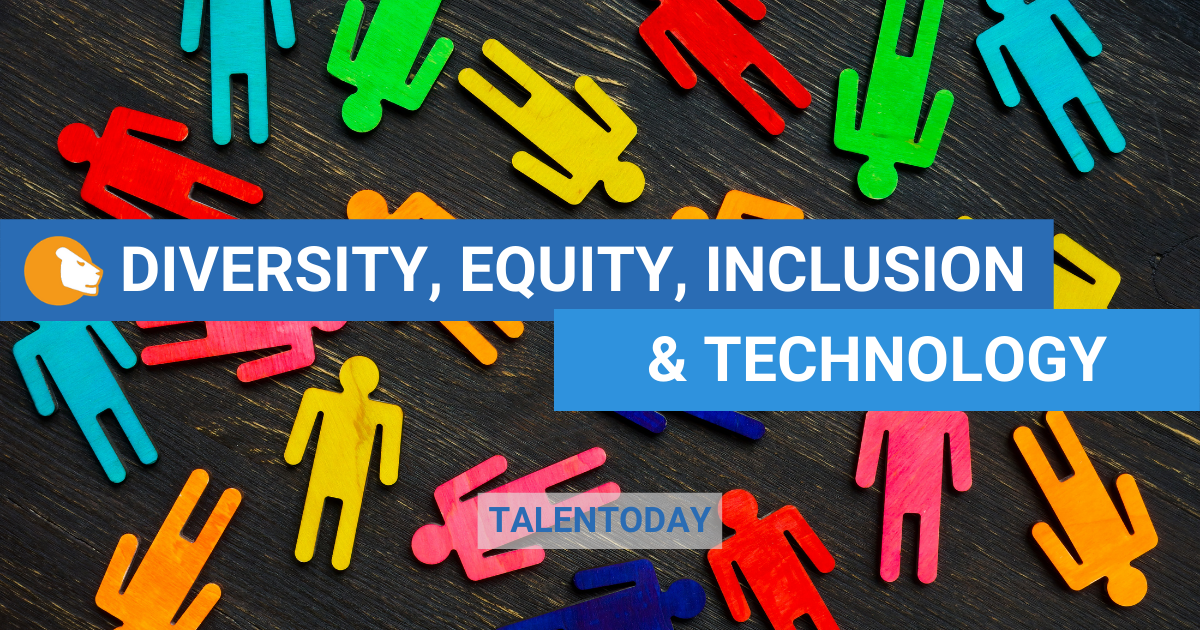
Workplace managers and teams are prioritizing Diversity, Equity and Inclusion (DEI) more now than ever before, and for good reason. DEI helps improve the presence of people of different races, genders, religions, sexual orientations, etc. (diversity); the fair and respectful treatment of all people (equity); and the extent to which all individuals feel respected, accepted and valued (inclusion). DEI also delivers a multitude of benefits that come from having a diverse population in your organization, including: profitability and value creation, innovation, and better decision making.
While business leaders have committed to diversifying their workforce, HR professionals and recruiters are still tasked with hiring the right people. Thankfully, science and technology can help organizations make the right hiring decisions while supporting DEI goals. Digital solutions and tools can help with everything from removing implicit bias from the selection process to predicting how someone will contribute to a team, and understanding how they will behave in a professional setting.
Opportunities and pitfalls associated with diverse hiring efforts
Research shows that bias is present in the hiring process and can start before a candidate walks in the door. For example, certain verbiage can attract more men than women, and people with white sounding names receive more callbacks on average than those with stereotypically black-sounding names. Implementing tools, such as a behavioral assessment, in your selection process can help you to proactively remove implicit biases. You can see a person for their strengths and not lean towards someone who is similar to you.
A common term that is used in the selection process is “culture fit.” However, when maintaining organizational culture becomes the sole focus of this process, it can have the unintentional consequence of hiring different versions of the same person. Allow your core purpose and values to guide you, while being cautious of how you equate those to your “culture” and how you assess a candidate’s ability to uphold your purpose and values. By making room for diversity to be a part of your culture, you will be empowered to celebrate and appreciate the value that each person is adding to your organization.
Diversity beyond what the eye can see
Before blindly jumping into diverse recruiting initiatives, decide what diversity means for your organization. Is it women in leadership? Recruiting and hiring people of color? Creating a comfortable environment that supports various stages of life? All of the above?
Think of the product or service that you’re selling. Can you confidently say that your team is reflective of the people you serve? Having people who can relate to your customer base is vital to the success of your organization. In fact, a team member who shares a client’s ethnicity is 152% more likely to understand the client. In this case, the diversity that we are striving for is easy to identify, and sometimes it goes beyond what we are able to outwardly see.
Understanding the importance of diversity of thought is an important step for your team to reach their highest potential. When team members are able to bring in different perspectives, it helps to create a culture of challenging the norms to allow for new and creative ideas and solutions. These various perspectives are the result of distinct life experiences or work backgrounds and can guide your team to greater successes.
How to leverage science and technology within your DEI efforts
As with any strategic change, diversity within an organization doesn’t happen overnight. It will take months of ongoing planning and years of commitment to become a part of the fabric of your organization. Luckily, there are things you can do immediately to promote equity and inclusion .
Create a culture of openness. Allow for ideas to be heard and create a safe environment for people to propose ideas. Give power to all members of your team to make decisions, and provide actionable feedback to their ideas rather than criticism.
Assess your team to see what areas you are lacking in. Confront skill gaps and then solicit teammates with diverse opinions to help you make business decisions and aid in brainstorming solutions.
Leveraging science and technology is a great way to ensure you are taking implicit biases out of the equation and being efficient in your efforts. Tools such as the MyPrint Collaboration Report are helpful for understanding how differences between two people can be beneficial, and visualizing group data through the Group DNA feature can help to find where your gaps are in your team.
Although change doesn’t happen overnight, there is nothing stopping you from starting the momentum today. Start by fostering inclusion on your team today by telling someone how their work matters. Then, take our complementary MyPrint assessment to start understanding how science and technology can support your goals!
Looking for additional resources and support? Email Talentoday at customer@talentoday.com to learn more about our assessment and services!
Show Your Traits, Not Your Type
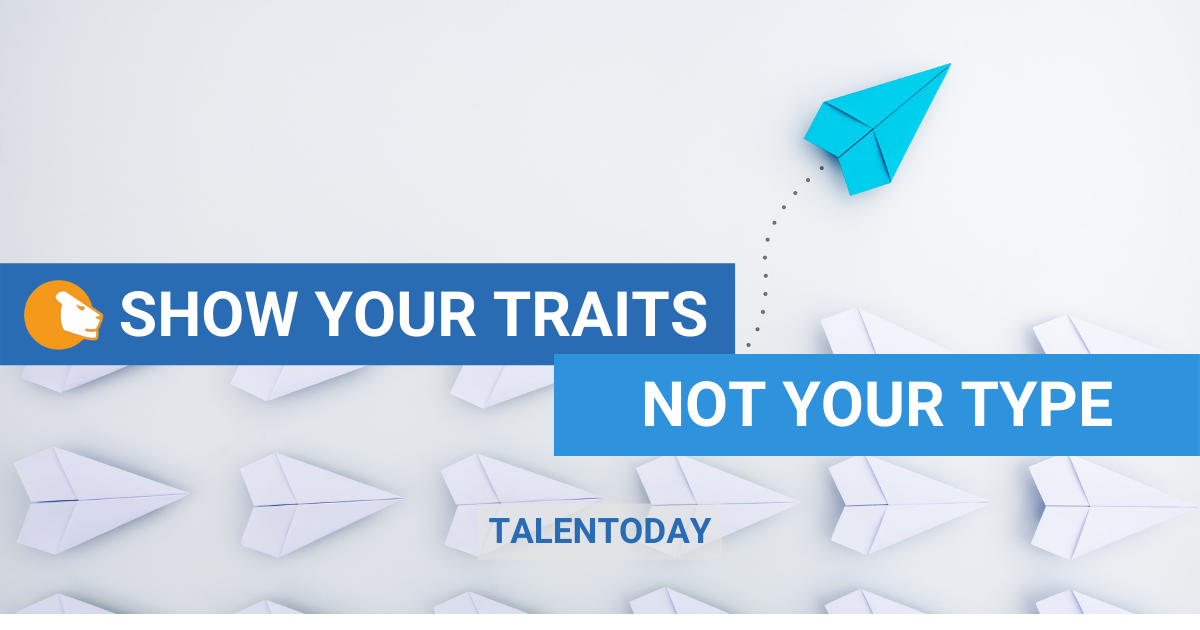
“What’s your type?” In the world of dating, this is the first thing people want to know. An easy answer, right? Intellectual, athletic, artistic — as humans, we typically begin with broad categories to describe ourselves and others. However, once you actually start describing what you’re looking for, you find yourself being more specific. “Likes to have philosophical conversations,” “enjoys outdoor activities in warm climates,” “likes to cook new recipes,” — in reality we are much more complex than those one word generalizations. The same philosophy should apply to soft skill assessments in the workplace. Instead of being bucketed into a generalized type, your traits are the best indicators of your unique strengths. Let’s break down the difference between types and traits.
Type Theory
Type theory is based around the idea that personality is a combination of qualities or dimensions that can be grouped together into a certain number of categories (or types). All people fall within one type based on which group they share the most specific attributes with. Think Myers Briggs or Enneagram, where you are one of 16 combinations of letters (ie, ESFJ) or one of 9 number types.
Yes, type theory is helpful for an organization to get a generalized idea of a person, but does that mean that a company really understands who you are, and more importantly, if you will be successful in the role? For example, if an assessment identifies you as an introvert, the assumption may be that that you are quiet, would prefer to work alone, and you need time to reflect on your thoughts before speaking. It’s a generalization, and while some of those assumptions may be true, chances are not all describe you.
The concern with using types in personality assessments is that humans are much more complex. Instead of Introversion and Extroversion being a dichotomy, it is better understood as a spectrum. That is where trait theory comes into play.
Trait theory
Rather than using broad categories to define human behaviors, trait theory focuses on the individual differences between people and eliminates the ‘boxes’ that type theory tries to fit people into. Going back to the introverted/extroverted example: trait theorists will say that a large majority of people actually fall somewhere in the middle and show qualities of both introverts and extroverts.
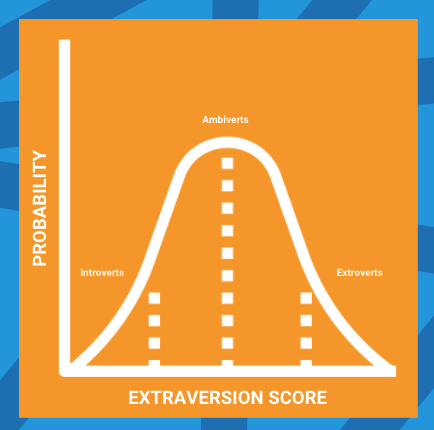
Research over the years has shown that there is enough of a variation in human personality for most of the scientific community to favor trait theory. Additionally, the most widely accepted theory of personality, the Big Five Theory, is part of trait theory. The Big Five is a theory in which five broad categories are the building blocks of personality, which most people have heard of using the acronym OCEAN: Openness, Conscientiousness, Extroversion, Agreeableness, and Neuroticism. Everyone falls on a spectrum in each of these categories, and sometimes these are broken down into smaller and more specific scales. This personality theory is the backbone of many of the personality assessments that are used today, like MyPrint® or the Big Five Inventory.
You are Unique!
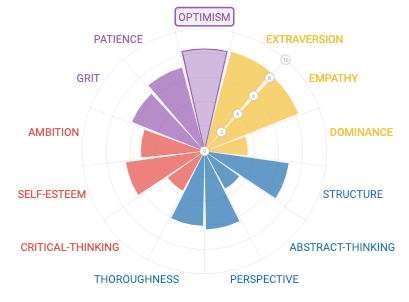
Now that you understand the differences between Types and Traits, which theory do you prefer when it comes to showcasing your soft skills? The one that generalizes you in a standard box, or the one that lets you expand outside those walls to showcase your unique qualities? If you want to discover more about your soft skill strengths, take a free MyPrint® assessment today! Once you have completed the questionnaire, you can begin using your traits to be more productive, improve your interpersonal skills, and set your personal and professional goals specific to your individual attributes. Additionally, you can see how your personality radar and motivation scales show the special qualities that make you YOU!
Looking for additional resources and support? Email Talentoday at customer@talentoday.com to learn more about our assessment and services!


